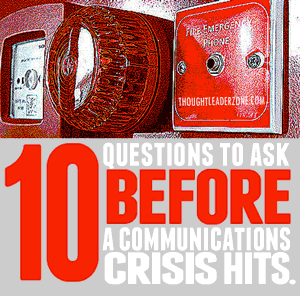 At the recent GWI American Water Summit in Washington, D.C., Pat Mulroy, general manager of the Southern Nevada Water Authority, made a comment that brought spontaneous and knowing laughter from the normally staid audience.
At the recent GWI American Water Summit in Washington, D.C., Pat Mulroy, general manager of the Southern Nevada Water Authority, made a comment that brought spontaneous and knowing laughter from the normally staid audience.
Ms. Mulroy was talking about how drought conditions in the Seven States made it easier to sell the message of mutual cooperation and declared: “A crisis is a terrible thing to waste!” She said she used the opportunity to raise awareness of conservation issues and to change the public’s mindset about water.
Crisis communications is a frequent topic on this site (read a few relevant posts here, here and here), and the focus is usually on reacting to a crisis and minimizing its negative impact on a business. But if handled well, a crisis can also have a positive impact.
That, however, takes planning and forethought about the types of benefits that might arise from a particular type of crisis.
Have you already outlined some positive, “silver lining” messages in your crisis playbook? Ask, assess, then act. We’re here to help!
See related posts:
Global Water Thought Leaders Meet in Washington, DC
Top Tweets from American Water Summit 2013 in Washington, DC

 A recent article
A recent article